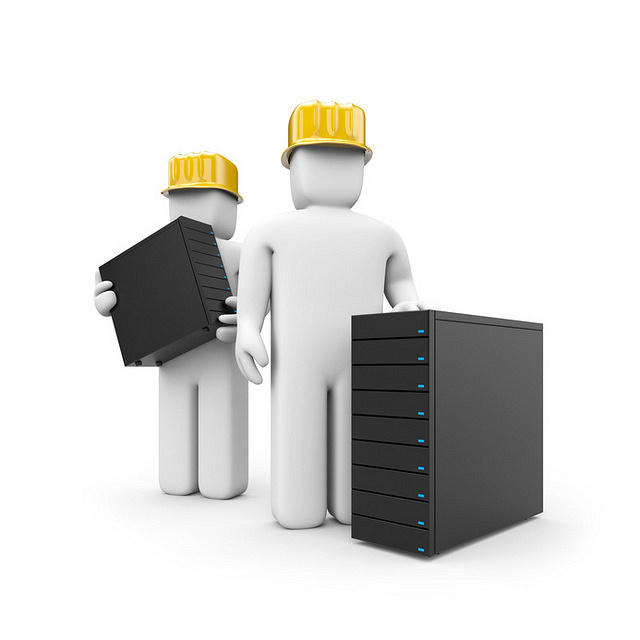Make Your Data Center LEED Compliant
Leadership in Energy and Environmental Design (LEED) certifications are one of the hottest topics in facilities management industry today. Considering how data centers often use significant amounts of energy on a daily basis, anything which can reduce energy consumption can cause significant savings immediately. While there are many ways to improve your data center operations, energy efficiency is a complex topic because it has a significant impact on the operating capacity of your facility. Fortunately by following LEED data center standards you can improve energy usage while following a standard even non-technical customers will respect.
What is LEED?
Depending on where you live, you may have seen LEED certified buildings in major metropolitan areas, or you may know people who are LEED professionals. Although LEED is the de-facto standard for energy efficiency, the standard involves much more work than simply upgrading your hardware and switching from incandescent to LED lighting. The designation was created by the U.S. Green Building Council as a way to set a standard benchmark to be used for classifying the energy efficiency of buildings.
Currently the standard is recognized across the globe, and LEED certified professionals are required to pass a rigorous exam to ensure they uphold the standards. There are LEED compliant standards for a variety of building types however due to the importance of data centers in today’s society, there now is a data center certification track.
Although it can be a challenge to achieve certification for your data center, the standard can be worth the effort because aside from helping to cut down your energy usage in holistic way, the LEED name alone is a credible name trusted by many to show that you are putting significant thought in how your facility is run.
Overview of the Credits
To achieve LEED certification, data center owners need to meet criteria under a variety of categories. The levels which can be achieved are: certified, silver, gold and platinum. While the full LEED data center specifications are vast, below is a brief overview of key areas which most data center professionals should focus on.
Data Center Location
Although these credits are mainly geared towards new construction, they are worth noting since they should be a top consideration of your company when you are expanding.
- Construction activity pollution prevention: This is a required condition for LEED certification which requires the construction company to create and implement an erosion and sedimentation plan for all construction associated with the project. This requirement applies to all projects regardless of size.
- Site development - protect or restore habitat: By meeting this standard, you can achieve up to two points for your project. This requirement can be met by either directly helping to rehabilitate a natural space on the property, or to donate funds to an environmental trust based on the total size of your property.
- Heat island reduction: This requirement provides up to two points and can be met in multiple ways. The first is to take measures to reduce heat islands by shading parking or increasing shade through vegetation and agriculture. Using a high reflectance roof or vegetated roof are other ways to meet the requirement.
Energy & Atmosphere
- Optimize energy performance: Meeting this requirement can land you up to 18 credits. The requirement revolves around using IT load reduction and HVAC related strategies to project cost savings through various improvements. From there, points are awarded based on the percentage of energy efficiency achieved.
- Minimum energy performance: This requirement is mandatory for LEED data center certification and involves demonstrating a 5% improvement in energy efficiency compared to the baseline performance rating. Data centers also require cooling units for computer and data processing rooms, critical power conditioning equipment, critical distribution equipment, heat rejection plants, and mechanical and electrical support rooms.
- Enhanced refrigerant management: This requirement is a possible one point for your business and involves having your business avoid refrigerants or only use low-impact refrigerants in your HVAC systems. The other way to meet this requirement is to select refrigerants which minimize the emission of compounds that cause climate change and ozone depletion.
Material & Resources
- Building life-cycle impact reduction: This condition can provide up to five points for your company. While there are a variety of ways to achieve this requirement, the concept revolves around reusing existing parts of the building as a way to minimize the environmental impact of the data center. This requirement also can be met by conducting a life-cycle assessment and taking steps to reduce the environmental impact of your data center over the course of a decade.
- Storage and collection of recyclables: This is a required condition for LEED certification. To meet this condition, data center owners need to have dedicated areas for waste collection which allow for the separation of recyclables. Special precautions also must be taken to handle the collection and disposal of at least two of the following: batteries, mercury-containing lamps, and electronic waste.
- Construction and demolition waste management: This requirement can provide up to two points towards LEED compliant certification. The requirement revolves around reducing the amount of waste sent to landfills through reuse and recycling. This requirement only applies to nonhazardous materials.
Should You Get Certified?
Although going for LEED certification can be a hassle, the biggest benefit of the standard is that the guidelines are holistic and can help you cut overhead costs in ways beyond simply using more energy efficient hardware. Aside from helping your bottom line directly, the LEED standard can help your data center stand out with socially conscious customers. Even if you don’t manage to achieve or pursue LEED certification, implementing some of the LEED guidelines listed on the official website can lead to significant cost savings and improved efficiency. For your reference, Site24x7 has a guide on energy efficiency calculators which can be used to help evaluate which measures you should pursue.
